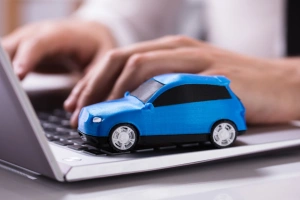What Is a Clutch in a Car, and How Does It Function?
If you drive a manual-transmission car, you already know how important the clutch is. Every time you shift gears, the clutch plays a crucial role in making the transition smooth.
In simple terms, the clutch is a mechanical device that connects and disconnects the engine from the transmission, allowing you to change gears without grinding them. Without it, your car wouldn’t be able to start, stop, or shift smoothly. Let’s find out what a clutch is in a car and how to maintain a clutch like an automobile pro!

What Is a Clutch in a Car?
A manual transmission vehicle requires a clutch system, which both joins and separates engine power transmission between the engine and gearbox. Pressing the clutch pedal creates a temporary engineering power breakdown to the wheels. You can now operate the gears without roughness. You can initiate vehicle motion again because releasing the clutch pedal connects the engine to the transmission, allowing power to flow back to the wheels.
Why Is the Clutch Important?
-
Smooth Gear Shifting: The clutch of a vehicle prevents gear grinding by smoothly disconnecting the engine from the transmission during gear shifting.
-
Controlled Starting & Stopping: The clutch also helps the car move from a standstill without stalling and apply brakes more creatively in an emergency situation.
-
Protects the Transmission: Furthermore, the clutch also reduces wear and tear on gears by managing power transfer. It protects the transmission systems and improves the vehicle’s lifespan.
In short, changing gears is not possible without a clutch. If there was a way, your transmission system would have to pay a hefty price.
Components of a Car Clutch
1. Flywheel
The clutch flywheel is a heavy metal disc that bolts to the engine's crankshaft. It gives a smooth surface for the clutch plate to grab. The flywheel helps keep the engine's momentum when the clutch is not engaged.
2. Clutch Plate (Friction Plate)
The clutch plate, also called the friction plate, sits between the flywheel and pressure plate. It has a cover of friction material (like brake pads) to grab and move power. The clutch plate wears down over time and needs to be replaced.
3. Pressure Plate
Pressure plates push on the clutch plate and hold it against the flywheel. They use springs (or a diaphragm) to keep up the clamping force.
4. Diaphragm Spring
The diaphragm spring is a spring mechanism in the pressure plate that engages or disengages the clutch. It helps to let go of tension when you push the clutch pedal, pulling the clutch plate away from the flywheel.
5. Release Bearing (Throw-Out Bearing)
The release bearing, also known as the throw-out bearing, is a compact bearing that shifts when you push the clutch pedal. It helps to cut down on friction between the rotating clutch assembly and the release fork.
6. Release Fork
The release fork's job is to shove the release bearing against the pressure plate when you step on the pedal. It works like a lever to disconnect the clutch.
How Does a Car Clutch Function?
The clutch operates in two main positions: engaged and disengaged.
Engaged Position (Pedal Released)
-
The pressure plate clamps the clutch plate against the flywheel.
-
Engine power transfers to the transmission, making the car move.
-
This is the default state when driving normally.
Disengaged Position (Pedal Pressed)
-
The release fork pushes the release bearing, which presses the diaphragm spring.
-
The pressure plate pulls away, releasing the clutch plate from the flywheel.
-
Power transmission stops, allowing gear changes or stopping without stalling.
This seamless engagement and disengagement make manual driving possible.
Types of Clutches in Automobiles
Not all clutches are the same. Here are the most common types used in cars:
1. Friction Clutch
Automobiles primarily use friction clutches for their power transfer operations. Auto clutches activate and deactivate power transmission through friction-based mechanisms. Further division of clutches occurs into two distinct categories.
-
Single Plate Clutch: It constitutes a basic design that employs one clutch plate apart from being lightweight and inexpensive (it appears in most passenger vehicles).
-
Multiple Plate Clutch: This clutch manages both increased torque and power while remaining installed in high-performance vehicle systems.
-
Cone Plate Clutch: Vehicle power transmission through conical surfaces as an alternative to standard flat plates. Cone clutches are not frequently used in current cars, yet they function in particular older vehicles and industrial machines.
2. Centrifugal Clutch
Scooters and small-engine vehicles make use of centrifugal clutches as their main component. Scooter drivers control these clutches by controlling the engine's RPM speed.
3. Hydraulic Clutch
Smooth pedal operation becomes possible through the use of hydraulic fluid within these clutches. Manual cars today use hydraulic clutches as a standard component to provide improved driving comfort for their users.
4. Electromagnetic Clutch
Transmission power engagement and disengagement through an electric current is possible with electromagnetic clutches. These types of clutches serve as standard components in the automatic transmission systems of hybrid vehicles and automated manual transmission designs.
Common Problems Associated with Car Clutches
Clutches wear out over time due to friction, heat, and improper use. Let’s take a look at some of the most common clutch problems, their causes, and quick fixes.
1. Clutch Slippage
Clutch slippage occurs when the clutch fails to maintain a solid grip. The primary cause is worn-out friction material on the clutch disc, often due to aggressive driving or frequent riding of the clutch.
Quick Solution:
-
Avoid excessive clutch slipping when starting or shifting.
-
If slippage persists, get the clutch inspected—it may need replacement.
2. Clutch Drag
Clutch drag happens when the clutch doesn’t fully disengage, making gear shifts difficult or causing grinding noises. This issue is often caused by air in the hydraulic system (in hydraulic clutches) or a misadjusted clutch linkage (in cable-operated systems). A warped clutch disc or weak pressure plate can also contribute.
Quick Solution:
-
Check and bleed the hydraulic system if needed.
-
Adjust the clutch pedal free-play to ensure proper disengagement.
-
If the problem continues, the clutch assembly may need servicing.
3. Clutch Judder (Shuddering)
If you feel strong vibrations when engaging the clutch—especially in first gear or reverse—you’re likely dealing with clutch judder. This is often caused by oil or grease contamination on the clutch disc or a warped pressure plate/flywheel. Misaligned engine mounts can also contribute to this issue.
Quick Solution:
-
Inspect for leaks (transmission or engine oil) near the clutch.
-
If contaminated, clean or replace the clutch disc and flywheel.
-
Check engine and transmission mounts for wear.
4. Noisy Clutch Operation
Squeaking, chirping, or grinding noises when pressing the clutch pedal usually indicate a problem with the release bearing (throw-out bearing) or a lack of lubrication in the clutch linkage. A failing pilot bearing can also cause similar noises when the clutch is engaged.
Quick Solution:
-
Lubricate the clutch linkage (if applicable).
-
If the noise persists, the release bearing may need replacement.
-
Ignoring this issue can lead to bearing failure and clutch damage.
To answer the question of what is a clutch in a car is - the clutch is a crucial component in manual cars, allowing smooth gear shifts and controlled driving. Understanding how it works helps you maintain it better and avoid costly repairs. If you notice slipping, grinding, or difficulty shifting, get it checked immediately. Also, always keep your insurance active with a reliable car insurance company in India to cover the repairing and accidental expenses.














































